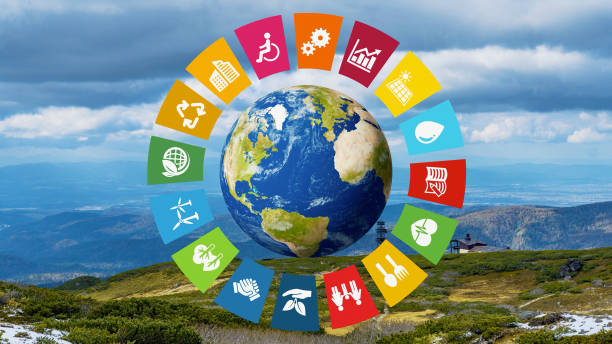In today’s world, businesses are no longer just about profits; they are increasingly seen as powerful agents of change. The United Nations Sustainable Development Goals (SDGs) provide a universal call to action to end poverty, protect the planet, and ensure prosperity for all. Businesses, regardless of their size or sector, can play a vital role in achieving these goals. This blog post is a step-by-step guide on how businesses can align their operations with the SDGs and make a positive impact on the world.
Step 1: Understand the SDGs
The first and most crucial step is to familiarize yourself with the 17 SDGs. Each goal has specific targets and indicators. Study them to identify which ones are most relevant to your industry and operations.
Step 2: Set Clear Objectives
Define clear and realistic objectives for your business’s contribution to the SDGs. These objectives should be specific, measurable, achievable, relevant, and time-bound (SMART). For example, you might set a goal to reduce your carbon emissions by 20% within the next five years.
Step 3: Integrate Sustainability into Your Business Strategy
Incorporate sustainability into your business strategy. Consider how your products, services, and operations can align with the SDGs. This might involve redesigning products to be more eco-friendly or reevaluating your supply chain for ethical sourcing.
Step 4: Engage Stakeholders
Involve your employees, customers, suppliers, and local communities in your sustainability efforts. Their input can provide valuable insights and help build support for your SDG initiatives.
Step 5: Measure Impact
Establish Key Performance Indicators (KPIs) to measure your progress toward SDG-related goals. These KPIs should be specific to your business and objectives. Regularly monitor and report on your performance.
Step 6: Innovate and Collaborate
Innovation is often the key to achieving SDG-related goals. Seek innovative solutions to reduce waste, energy consumption, and environmental impact. Additionally, consider partnerships with organizations, NGOs, or government agencies to leverage collective resources and knowledge.
Step 7: Promote Sustainable Consumption
Encourage your customers to make sustainable choices. This could involve offering eco-friendly products, promoting recycling, or educating your customers about the environmental impact of their choices.
Step 8: Empower Employees
Your employees are essential partners in achieving SDGs. Train them on sustainability practices, involve them in decision-making processes, and empower them to come up with sustainable ideas.
Step 9: Report Transparently
Transparency is crucial. Provide regular reports on your sustainability efforts, progress, and challenges. Share your successes and lessons learned with stakeholders and the public.
Step 10: Advocacy and Policy Engagement
Engage with policymakers to advocate for sustainable practices and policies that support the SDGs. Businesses can be influential in driving policy changes that benefit both society and the environment.
Step 11: Continuous Improvement
Sustainability is not a one-time project but an ongoing commitment. Continuously review and refine your sustainability efforts to ensure they remain relevant and effective.
Step 12: Celebrate Achievements
Celebrate your successes and acknowledge the positive impact your business has had on the world. This recognition can motivate both your team and your customers to continue supporting your sustainable initiatives.
Incorporating the SDGs into your business strategy is not just about doing good; it can also lead to increased brand reputation, customer loyalty, and long-term profitability. As businesses worldwide step up to embrace sustainability, they become catalysts for change, advancing the global agenda of creating a better, more sustainable future for all. By following this step-by-step guide, your business can become an integral part of this transformation, making a meaningful contribution to the achievement of the SDGs.
